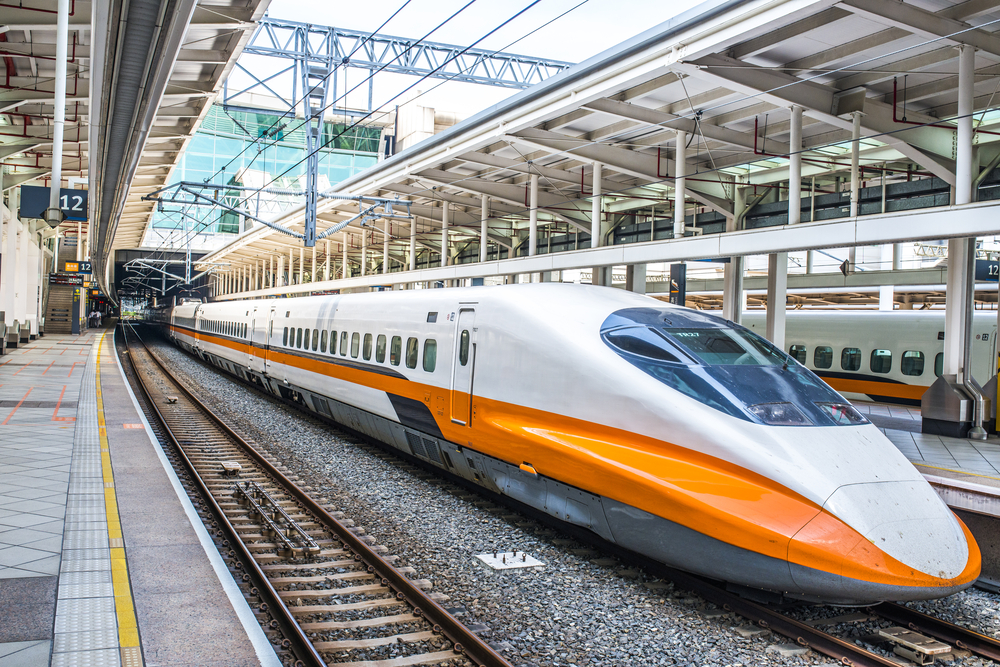
Shinkansen bullet trains are the fastest and most convenient way of discovering Japan. The Japan Rail (JR) network is extensive and the trains reach a top speed of 320 km/h (199mp/h). This allows you to get to wherever you need in little time. The nine Shinkansen lines take you in different directions around Japan.Shinkansen is the term used to describe bullet trains in Japan and it literally means new trunk line. Sometimes referred to as super express services in.A high-speed intercity train network that currently consists of more than 2,600 kilometers of rail lines, the Shinkansen was first launched more than 50 years ago.
Bullet Trains Trial Runs Are
Specific trial runs are typically set aside for this purpose. The Shikansens top commercial time varies somewhat, but its best record is about 277 mph (443 kph).Answer (1 of 2): Bullet Trains work on the principle similar to what we as a child used to do by balancing one magnet with help of other one. A trip between Tokyo and Osaka used to take six hours and 40 minutes via the old Limited Express trains, but it was cut down to just three hours and 10 minutes with the Tokaido Shinkansen. Because of this significant development, day trips to and from the two big cities became more frequent since.The high-speed rail is about 3,038 km long.
The country’s Shinkansen ‘Bullet Train’ network has been developed over more than 50 years and covers all main trunk routes.The network centres on the capital Tokyo, with lines to the west, south, east and north of this densely-populated nation. Japan is where regular, high-speed railways were born. 5.The first high-speed rail system, the Tkaid Shinkansen, began operations in Japan in 1964 and was widely known as the bullet train. Thus far no high speed.The Shinkansen’s success continued as traffic demand increased through the next couple of years. By July 13, 1967, two months before its third anniversary, it had already serviced 100 million passengers. And, in 1976, it reached the one billion passenger mark.
Infrastructure improvements later allowed line speeds to be increased to 220km/h. Initially, the trains ran at up to 200km/h (125mph), increased with improvements in infrastructure, signalling and maintenance.Second-generation Shinkansen was introduced in 1972 between Shin-Osaka and Okayama, three years later being extended to Hakata. Shinkansen project detailsThe first line to see these ground-breaking trains was from Tokyo to Osaka, the Tokaido Shinkansen, opened in October 1964. The national Japan Railways Group (JR) operates the Shinkansen bullet train network.
Shinkansen infrastructureOperating such an intensively used, high-speed railway creates enormous strains on the infrastructure and as a result, around a third of all costs are consumed in maintenance.Shinkansen run principally on conventional steel rail mounted on concrete sleepers but the fastest services use dedicated tracks to avoid conflict with slower trains.Shinkansen trains run on two different gauges, 1,067mm and 1,435mm, which precludes each part of the system from using the other’s trains. Each Shinkansen line involves fast trains, semi-fast trains and local trains. The Kyushu Shinkansen line connects Hakata Station in Fukuoka with Kagoshima.Currently, Shinkansen trains are capable of operating at a maximum speed of 320km/h. The Shinkansen network also includes the Hokkaido line from Aomori to Hakodate, with extension to Sapporo scheduled for 2030. Northbound services have been expanded, with the introduction of Tohoku Shinkansen branch lines, Yamagata Shinkansen from Tokyo to Shinjo and the Akita Shinkansen between Tokyo and Akita.Hokuriku Shinkansen line was opened in 1997 between Takasaki and Nagano, extended in 2015 to run from Tokyo to Kanazawa. These were the Tohoku Shinkansen, from Tokyo to Morioka and now Aomori, and the Joetsu, to Niigata.
The model is distinguished by its 15m-long power car nose, giving an extremely aerodynamic profile. Nozomi are the fastest and most modern trains, the dramatically-styled 500 Series. Rolling stockThree types of trains operate on the Shinkansen routes. Signalling and communicationsSignalling is broadly fixed block, although, with such high line speeds, sections are much longer than is standard elsewhere.A regular clock-face departure pattern for most services helps maintain a high level of reliability but, in the event of emergencies, train crews are in constant contact with their nearest control centre.Information systems on newer variants of Shinkansen trains are proving much more reliable than previously, thanks to their use of much shorter cable lengths.

The first part of this line is set to be completed in 2027, connecting Tokyo’s Shinagawa Station to Nagoya. Major experiments are being conducted into the use of magnetic levitation (Maglev) technology, whereby magnetic power is used to levitate the vehicles and propelled by linear motors, which offers the potential for even higher speeds, by eliminating friction and vibration.Maglev train, Linear Chuo Shinkansen, is being developed and tested as the fastest bullet train, capable of reaching speeds of 500km/h. The futureExpansions of the Shinkansen bullet train network remain a priority. The train will start running on the Tokaido line in 2020, with the aim to launch 40 N700S trains by 2022. Battery-powered N700S train will be the first completely revamped Shinkansen in more than a decade.
The line will see a future expansion of 153km to reach Osaka.


 0 kommentar(er)
0 kommentar(er)
